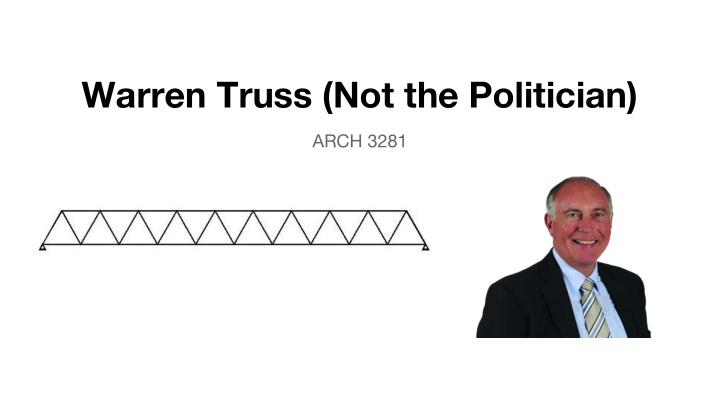



Warren Truss (Not the Politician) ARCH 3281
History Use of trusses trace back to classical Greek Structures ● Truss bridges using isosceles triangles began in mid 1800s in ● France James Warren and Willoughby Monzoni patented equilateral ● triangle trusses in 1848 in Britain First truss not to use a vertical web ● (Brooklyn Bridge, 1883 ) (1905 Railroad Bridge of Severn River) (equilateral triangle pattern in structure of bird The first suspension bridge to Warren trusses used for railroad bridges in bones) use the Warren Truss Britain and India First truss with a precedent in nature
Configurations
Typical Uses of the Warren Truss Roofing structures ● Decking ● Light aircraft construction ● Bridges - both rail and road ●
Structural Actions Red = Compression Blue = Tension The truss is made up of horizontal members joined solely by angled cross-members. Equilateral triangular spaces characterize the resulting shape. This form ensures that no member is exposed to bending or torsion, only tension and compression.
Structural Actions The diagram above explains where compression and tension occur when a load is placed on the center point. The red members are compressed as the load drags down the center. The members push against the force, keeping the bridge solid. The blue forces act in tension, keeping the bottom member attached to the rest of the structure. The load attempts to pull the blue members out of their rooted positions but they resist.
Structural Actions GOOD TO KNOW: The forces DO change based on the position of the load. As a roof structure, the force remains constant until wind, rain, and snow (especially in Minnesota) puts unequal strain on the members. An idealized version of a truss, the Warren truss is economic in its use of material, making it comparatively light.
Recommend
More recommend